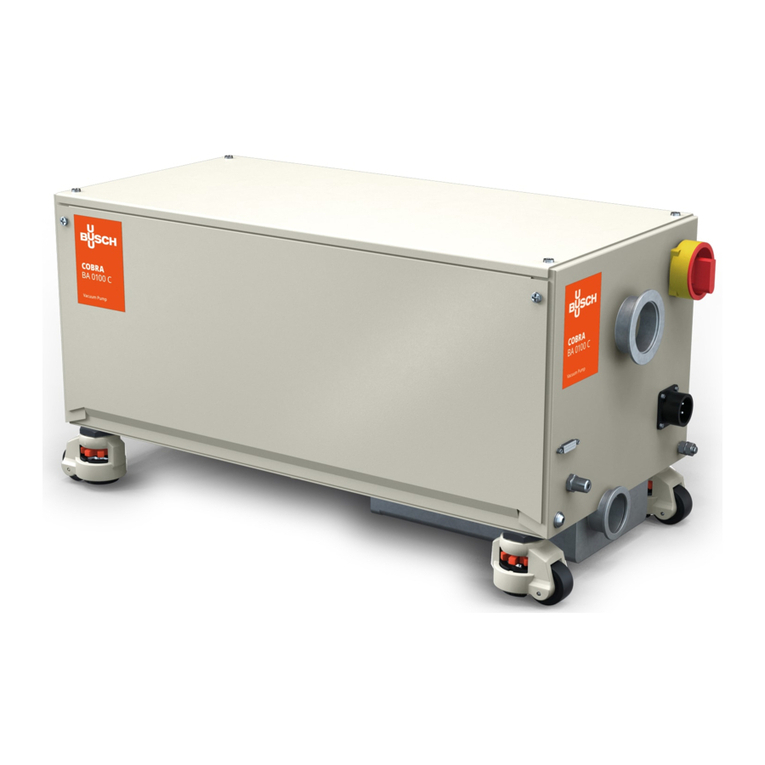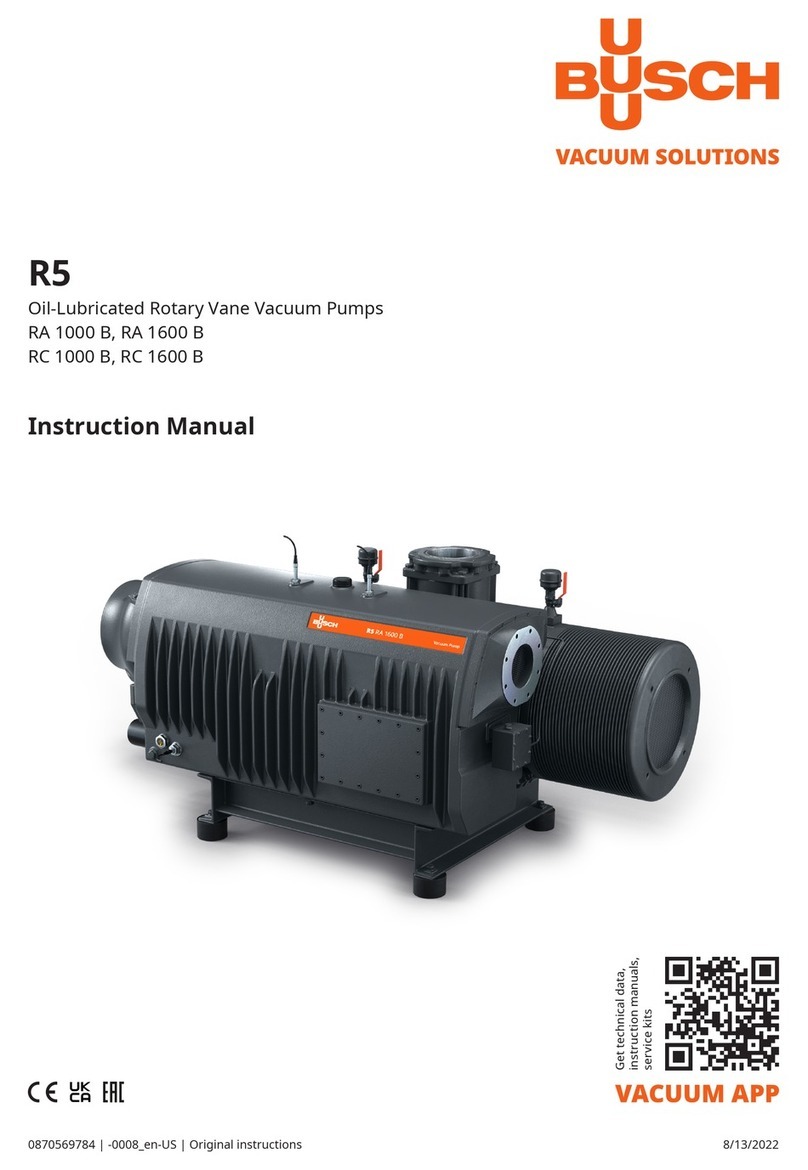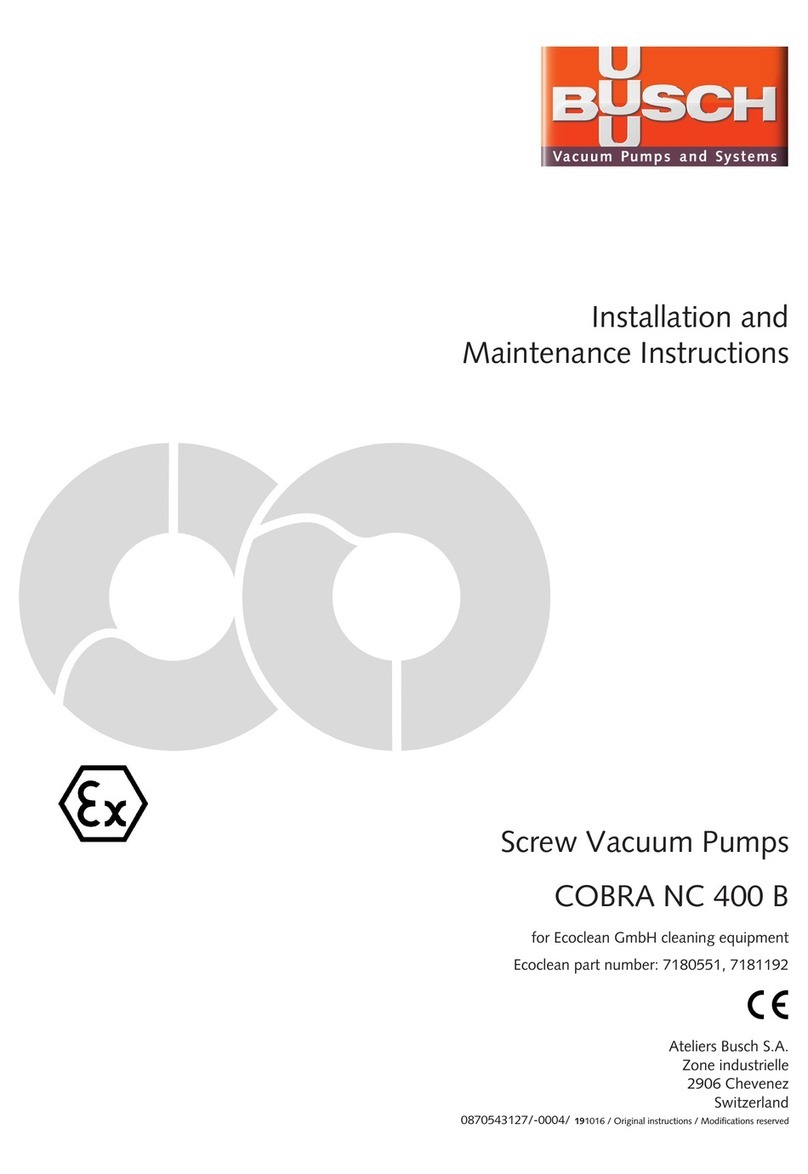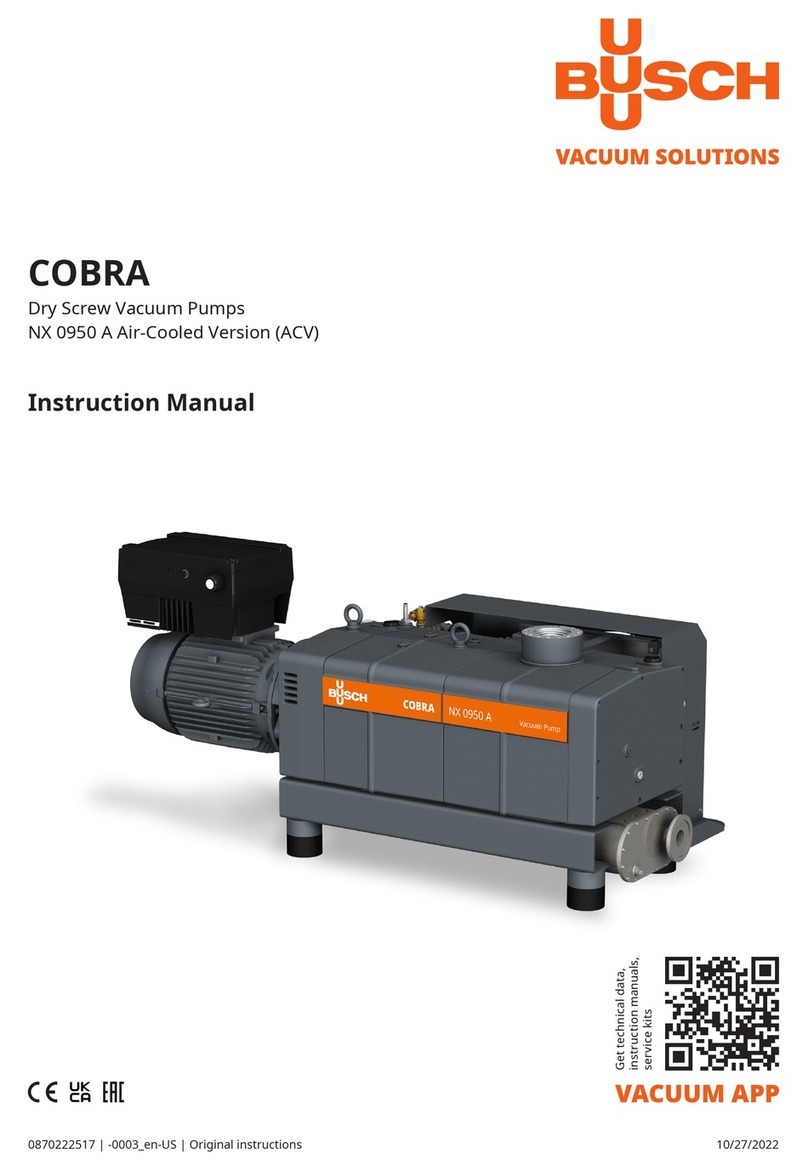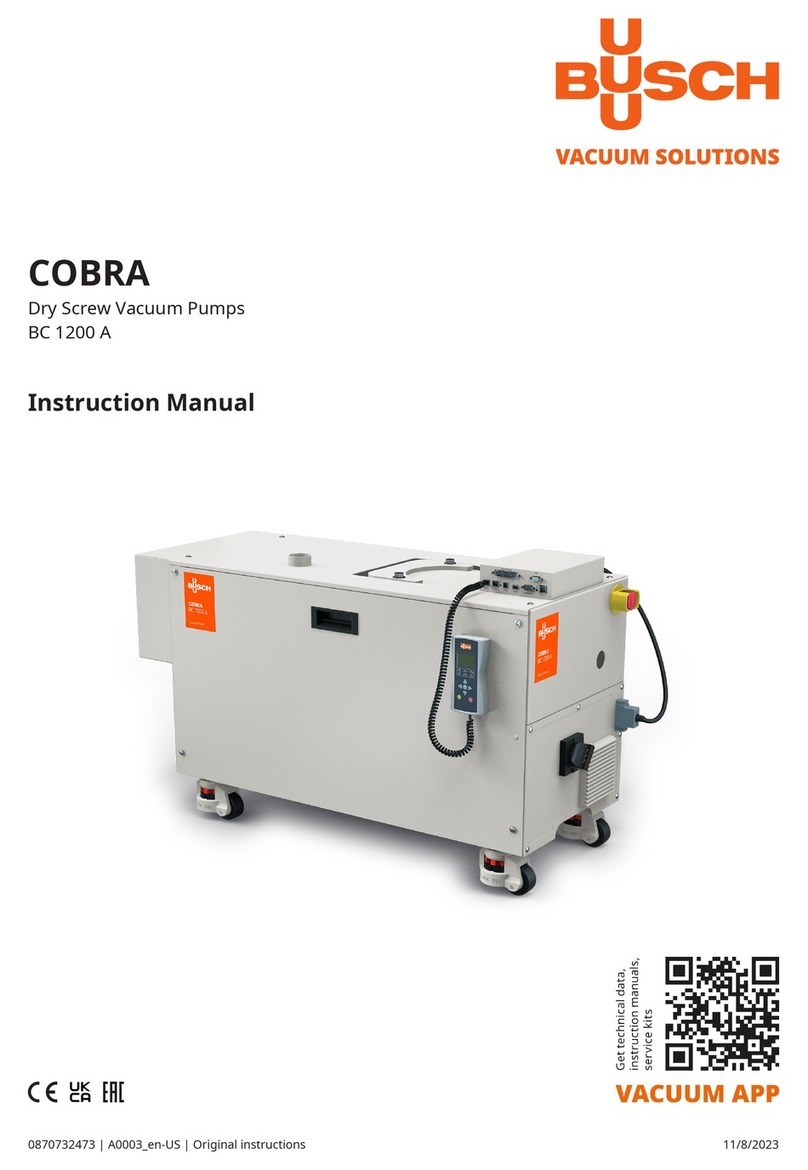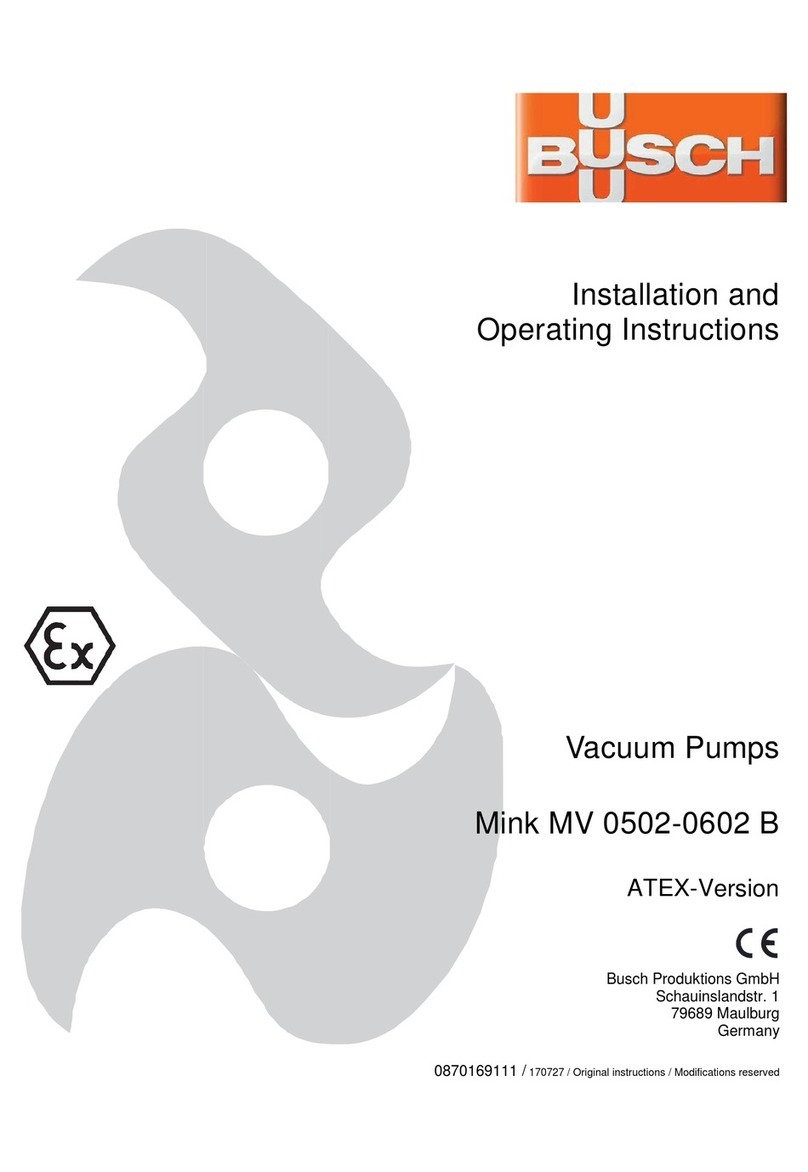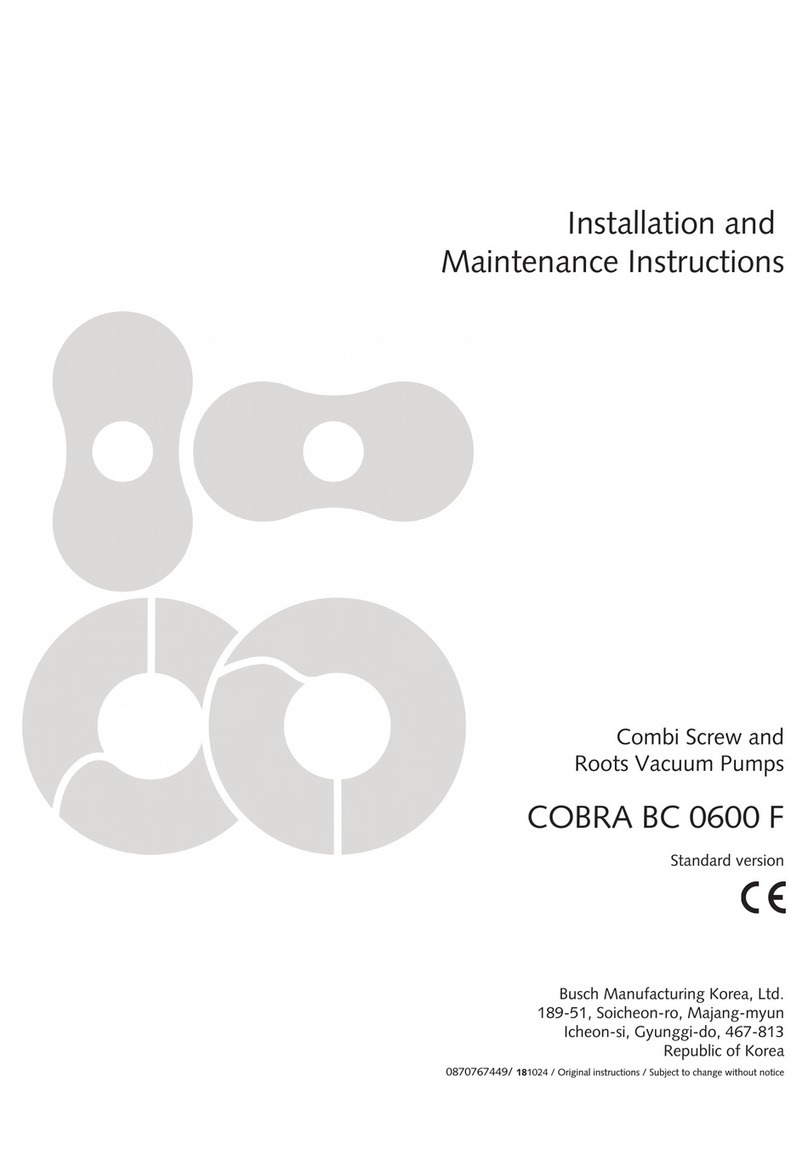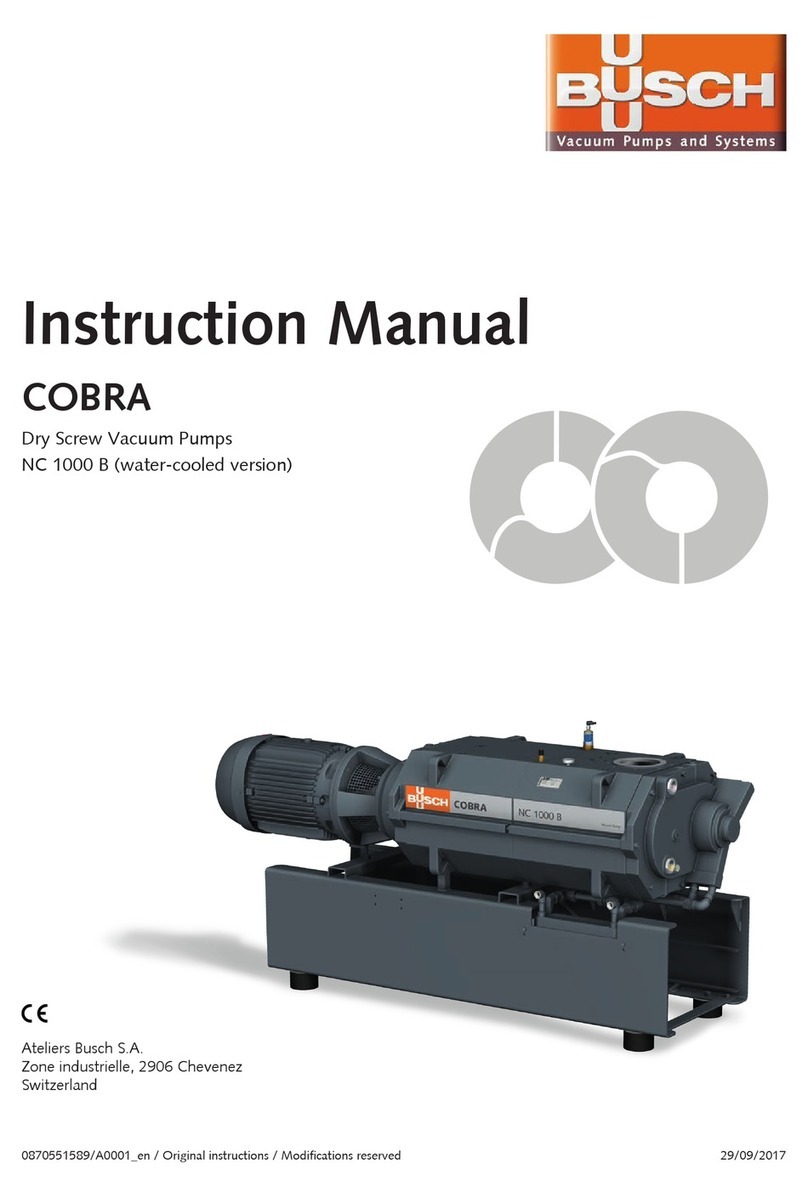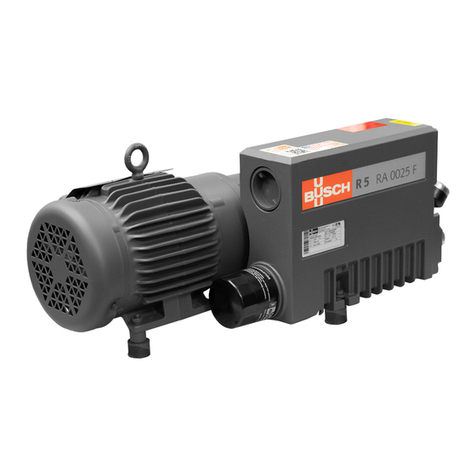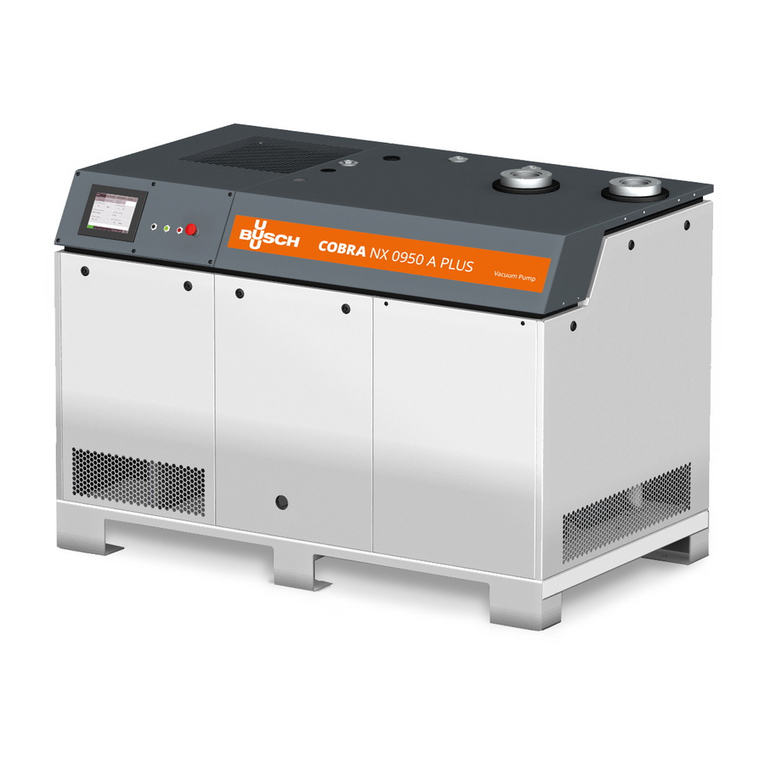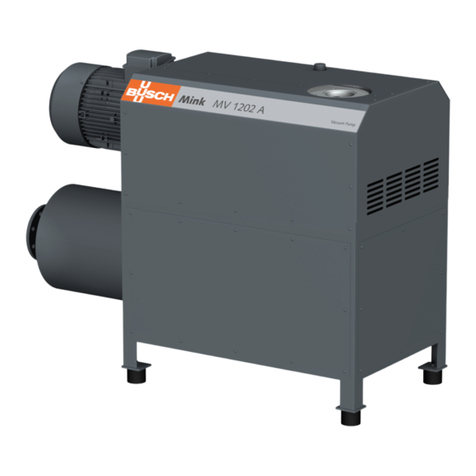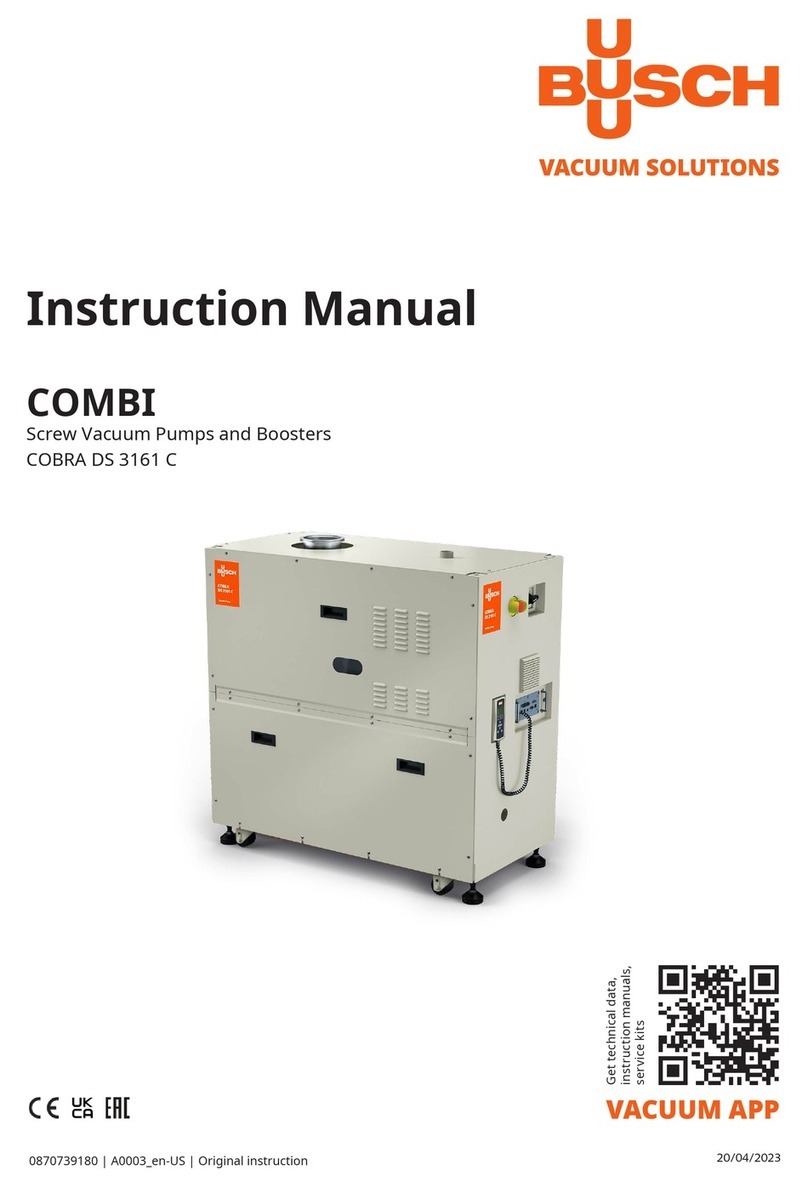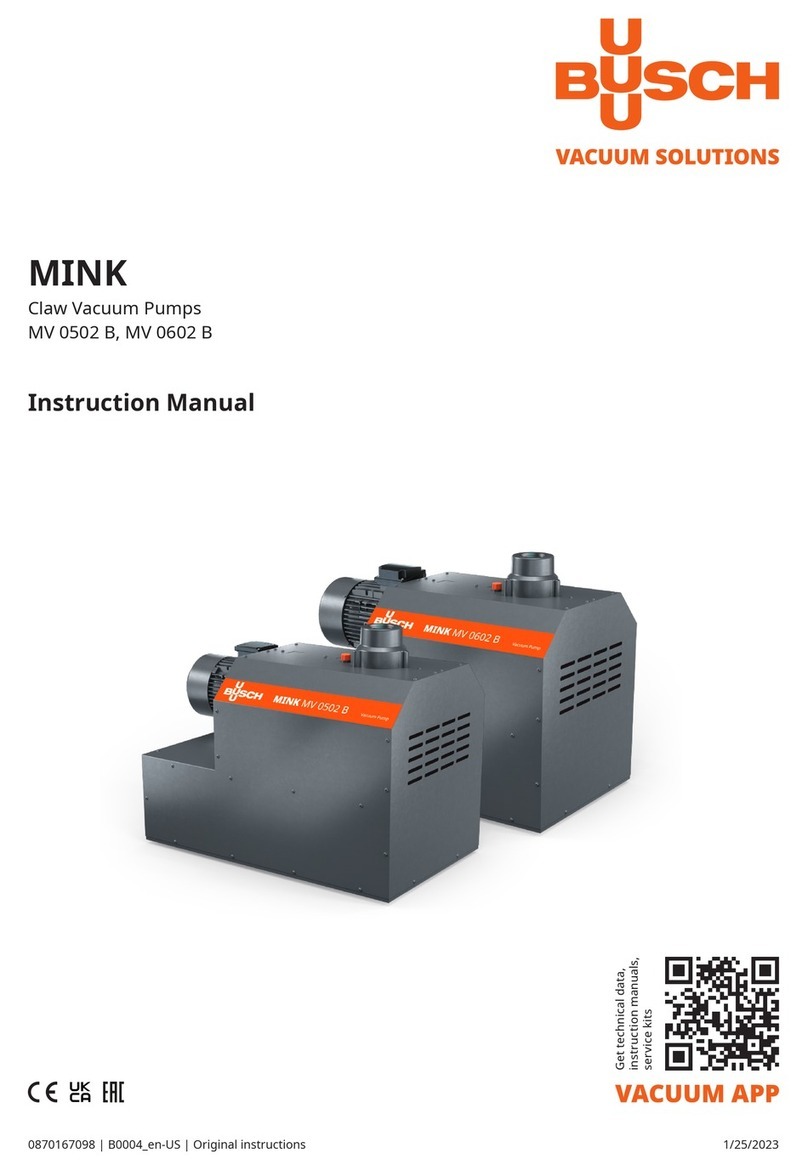LM 0100-0800 A, LT 0130-0750 A
page 10 0870700034 / 171101
•Make sure that all provided covers, guards, hoods etc. remain
mounted
•Make sure that protective devices will not be disabled
•Make sure that cooling air inlets and outlets will not be covered
or obstructed and that the cooling air flow will not be affected
adversely in any other way
•Make sure that the installation prerequisites (➔page 5:
Installation Prerequisites) are complied with and will remain
complied with, particularly that a sufficient cooling will be
ensured
Setting Operating Conditions
Selection of Operating Liquid
A continuous flow of operating liquid is required whenever the
vacuum pump is operating. Water is usually used as the operating
liquid for the conveyance of air and other inert gases. Other ring
liquids may be used in order to comply with the selected gases and
separation methods.
The kinematic viscosity at operating temperature shall not exceed
2 mm²/s and higher viscosities require increased drive power. The
vapour pressure of the operating liquid should be at least 16 mbar
below the desired operating pressure (vacuum level) at the pump
suction connection, to avoid risk of cavitation. Higher vapour
pressures deteriorate the suction capacity and the ultimate pressure
as stated in the performance tables or curves. In case of use of
operating liquids other than water, confirmation of the vacuum
pump’s conveying characteristics shall be sought from Busch.
If liquids get conveyed together with the process gas (typically up to
50% of the quantity of the circulating liquid rate as given in the
datasheet) the addition of fresh liquid can be reduced significantly.
Condensation of vapour inside the vacuum pump is normal and
acceptable but in extreme circumstances can cause cavitation and
destroy components of the vacuum pump. Condensation upstream
of the vacuum pump (spray or surface condenser) is an alternative
solution in extreme cases of high vapour load and insufficient inert
gas. Under certain conditions the accumulating condensate can be
conveyed along by the vacuum pump. Otherwise a separate liquid
pump must be provided for. The design shall be performed by the
manufacturer/supplier.
The suction capacity (or volume flow) as given in the performance
table is achieved at an operating water temperature of 15°C.
Operation at higher water temperatures leads to a reduced suction
capacity (or volume flow), but leaves the option to save fresh water
or cooling liquid in case of open or closed circuit cooling. This liquid
rate shall be set by means of the regulating valve rFor rBonly to
such a quantity, that the required suction capacity (or volume flow) is
achieved. The regulating valve shall be locked in this position.
Fresh Water Requirement
Fresh water flow rate requirements are shown in the technical data
section ➔page 24. The data given applies to once through
operation.
These water flow rates result in approximately a 5.5°C rise in
temperature for a single stage vacuum pump, and a 2.7°C rise for a
two stage vacuum pump when handling dry air. Condensable
vapours in the gas stream, however, will add to the heat load and
cause a higher temperature rise through the vacuum pump.
Partial recovery flow rates may be reduced by up to 50% dependent
upon temperature rise through the vacuum pump (see above
comment).
If operating speed is varied from the given values, the flow rate
requirements vary accordingly.
Operating Liquid Level
Note: The options to check the level depend on the installation. In
case the installation provides no means for level check, undo the
plug (b). Excess operating liquid will then flow out of the port. If
necessary fill in operating liquid, until it reaches the bottom edge of
the port. Reinsert the plug (b) prior to starting the vacuum pump.
•Make sure that the operating liquid reaches the middle of the
shaft when the vacuum pump is to be started
Pressure Control
At very low pressures and sufficiently high temperatures the
operating liquid can locally transfer into the vapour phase, creating
bubbles within the operating liquid. As the pressure rises towards
the outlet slot the bubbles collapse. This process is called cavitation.
In case of bubbles that have been located on surfaces the operating
liquid cannot intrude the cavity left by the bubble equally from all
directions. Instead the inflowing liquid hits the surface with high
speed. This causes erosion, which can destroy the vacuum pump
rapidly. The formation of bubbles also deteriorates the pump
performance. Cavitation is clearly audible by its crackling noise.
The working pressure of the vacuum pump shall therefore be
sufficiently above the vapour pressure of the operating liquid. In
particular the pressure control in the vacuum system must by no
means be achieved by throttling or even closing of the suction line!
The vapour pressure of the operating liquid and consequently the
ultimate pressure can be reduced by cooling. However, this
increases the cooling water flow considerably. In most cases the low
ultimate pressure is not required and cavitation shall be avoided by
means of vacuum limitation rather than cooling.
Removing Contaminants and
Deposits
•In closed operating liquid circuits with water use softened water
to prevent scale formation
•For all operating systems make sure that no particles with a
diameter larger than 0.1 mm will intrude the vacuum pump,
neither via the process gas nor via the operating liquid. Filter
out larger particles before the vacuum pump. Use a knock out
pot and/or filter to remove larger particles from the process gas.
Use a strainer or filter to remove larger particles from the
operating liquid.
The particle contamination concentration shall not exceed 5% by volume.
When removal of particles is impractical then a clean alternative operating
liquid source should be used. A continuous flow of operating liquid is required
whenever the vacuum pump is operating.
Impeller Casings Purge:
•The impeller casings have tangential drains which can be piped
away to purge dirt particles in dirty applications. This will
increase the life of the pump but is not a substitute for
preventing foreign matter entering the vacuum pump in the first
place. When casing purge is used additional service liquid flow
should be supplied to allow for the loss through the purge.
